#Semaeostomeae
Explore tagged Tumblr posts
Text
Uncharismatic Fact of the Day
Even though Spongebob has a fun time jellyfishing, you probably wouldn't want to mess with the real thing. The famous cartoon jellyfish are based on a real species, commonly known as the mauve stinger. Just like its fictional counterpart, mauve stingers are bright pink with vivid spots-- and they have a very painful sting!

(Image: A mauve stinger (Pelagia noctiluca) by Stergios Vasilis
#mauve stinger#Semaeostomeae#Pelagiidae#jellyfish#true jellyfish#cnidarians#invertebrates#uncharismatic facts
419 notes
·
View notes
Text

A lion's mane jellyfish (Cyanea capillata) in the White Sea
by Alexander Semenov
#lions mane jellyfish#jellyfish#cnidarians#cyanea capillata#cyanea#Cyaneidae#semaeostomeae#Scyphozoa#cnidaria#wildlife: misc
181 notes
·
View notes
Note
Fried egg jellyfish :3

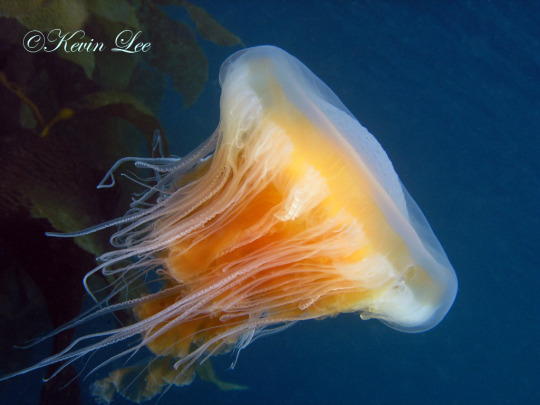
Photos thanks to Karolle Wall & Kevin Lee, respectively. Cotylorhiza tuberculata, the Mediterranean jellyfish, is another species which is commonly called the fried egg jellyfish :)
#fried egg jellyfish#jellyfish#cnidarian#scyphozoa#semaeostomeae#marine life#invertebrates#invertiblr#marine invertebrates#animal polls#poll blog#animals#my polls#polls#tumblr polls
67 notes
·
View notes
Photo
[ID: A flag with 11 diagonal stripes. The stripes from upper left to lower right are dark blue, blue, light blue, blue, dark blue, blue, dark blue, blue, light blue, blue, dark blue. Overlaid on the flag are two blue moon jellyfish with white outlines.]


MOONJELLIEGENDER
Moonjelliegender is a gender connected to moon jellyfish
Flag made by @nicksgenderhoard Term by us
Requested by anon
#aquatic#cnidarians#medusozoans#jellyfish#true jellyfish#semaeostomeae#ulmaridae#moon jellies#gender
196 notes
·
View notes
Text



Range: Atlantic, Arctic, Pacific, & Indian Oceans
179 notes
·
View notes
Note
Placental jellyfish
Is it a placenta? Is it a jellyfish? NO! YES!
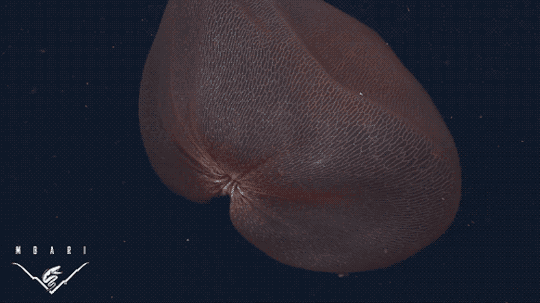
Deepstaria enigmatica, family Ulmaridae, order Semaeostomeae, class Scyphozoa
Usually found in Antarctic and near-Antarctic seas, but have been found in the Atlantic as far South as the Gulf of Mexico.
Usually found at depths of 600–1,750 m (1,970–5,740 ft).
This species is known to have symbiotic (possibly parasitic) isopods living in their bells.
Find out more:
Solving the Mystery of the Placental Jellyfish | Deep Sea News
Deepstaria enigmatica - Wikipedia
Better and New Video of the Enigmatic Placental Jellyfish | Deep Sea News
276 notes
·
View notes
Text
Round 2.5 - Cnidaria - Scyphozoa




(Sources - 1, 2, 3, 4)
Scyphozoa is a marine class of cnidarians commonly referred to as “true jellyfish”, “jellyfish”, or simply “jellies”. They are composed of three living orders: Coronatae (“Crown Jellies”), Rhizostomeae (“Root-mouth Jellies”), Semaeostomeae (“Flag-mouth Jellies”).
Scyphozoans usually display a four-part symmetry and have an internal gelatinous material called mesoglea, consisting of as much as 98% water. A ring of muscle fibres within the mesoglea surrounds the rim of the dome, and the jellyfish swims by alternately contracting and relaxing these muscles. As medusae, they eat a variety of crustaceans and fish, which they capture using stinging cells called nematocysts. The nematocysts are located throughout the tentacles that radiate downward from the edge of the umbrella dome, and also cover the four or eight oral arms that hang down from the central mouth. Some species, however, are instead filter feeders, using their tentacles to strain plankton from the water. The mouth opens into a central stomach, from which four interconnected diverticula radiate outwards. Some genera also have smaller mouths in the oral arms. The lining of the digestive system includes further stinging nematocysts, along with cells that secrete digestive enzymes. The nervous system usually consists of a distributed net of cells, although some species possess more organised nerve rings. Some species also have pigment-cup ocelli, though they are not as advanced as Cubozoan eyes. Coronataens (ex: image 2) are characterized by a deep groove running around the umbrella, giving them the crown shape which gives them their name. Rhizostomeans (ex: image 1 and 3) do not have tentacles nor other structures branching off from the edges of the bell. Instead, they have eight highly branched oral arms which fuse together as they approach the central mouth of the jellyfish. Semaeostomeaens (ex: image 4 and gif below) have four long, frilly oral arms flanking their quadrate mouths, as well as tentacles.
Most species of Scyphozoa have two life-history phases, including the planktonic medusa or polyp form, and the inconspicuous, but longer-lived, bottom-dwelling polyp, which seasonally gives rise to new medusae. Most species appear to be gonochorists, with separate male and female individuals. The gonads are located in the stomach lining, and the mature gametes are expelled through the mouth. After fertilization, some species brood their young in pouches on the oral arms, but they are more commonly planktonic. The fertilized egg produces a planular larva which, in most species, quickly attaches itself to the sea bottom. The larva develops into the hydroid stage of the lifecycle, a tiny sessile polyp called a scyphistoma. The scyphistoma reproduces asexually, producing similar polyps by budding, and then either transforming into a medusa, or budding several medusae off from its upper surface via a process called strobilation. The medusae are initially microscopic and may take years to reach sexual maturity.
Scyphozoans have existed since the Early Cambrian.
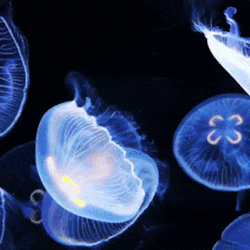
Propaganda under the cut:
The Lion’s Mane Jelly (Cyanea capillata) is one of the largest jellyfish, with the largest recorded specimen having a bell width of 210 cm (7 ft) and tentacles around 36.6 m (120 ft) long.
Jellyfish of the order Rhizostomeae are considered edible, both as a delicacy and for use in traditional medicine, and are eaten mainly in Asia, typically dried and/or salted.
The giant Nomura's Jellyfish (Nemopilema nomurai) can reach similar sizes to the Lion’s Mane Jellyfish, and their large size and quantity often negatively affects fisheries in East Asia. Aside from humans, their only predators are swordfish, tuna, sunfish, and leatherback sea turtles. A decrease in predators and an increase in favorable conditions and warming seas have caused an explosion in population, displaying that an increase in animal populations is not always a good sign! Scientists are studying their venom for use in medical applications, such as for treating joint disease and in cancer research. The Japanese company Tango Jersey Dairy also produces a vanilla and jellyfish ice cream using Nomura's Jellyfish.
While most jellies are exclusively marine, the Bay Nettle (Chrysaora chesapeakei) ventures into the Chesapeake Bay’s brackish water all the way up into the freshwater of Baltimore’s Inner Harbor.
The Giant Phantom Jelly (Stygiomedusa gigantea) is a deep sea jellyfish that is rarely seen, with only around 110 sightings in 110 years. It thought to be one of the largest invertebrate predators of the ocean's midnight zone and twilight zone, with an umbrella-shaped bell that can grow up to 1 m (3.3 ft) in diameter and paddle-like arms that can grow up to 10 m (33 ft) in length. The bell's pliant tissue allows for the jellyfish to stretch 4 to 5 times its size, presumably to engulf their prey. They do not have any stinging tentacles and instead use their arms to trap and engulf their prey which consists of plankton and small fish. The Giant Phantom Jelly has a symbiotic relationship with the Pelagic Brotula (Thalassobathia pelagica), for which it provides food and shelter beneath its massive billowing bell, while the fish aids the jelly by removing parasites.
The Mauve Stinger (Pelagia noctiluca) is a fairly small purple jellyfish that is able to glow in the dark (bioluminesce). Light is emitted in the form of flashes when the medusa is stimulated by turbulence created by waves or by a ship's motion. Unusually among cnidarians, Mauve Stingers are able to consume phytoplankton, alongside copepods and other usual planktonic fare.
The Moon Jelly (Aurelia aurita) (see gif above) is gaining popularity in aquarium touchtanks as they lack long tentacles and their sting has little to no affect on humans. They are also one of the longer-lived jellyfish, living up to two years in their medusa form, and are easy to rear and feed, making them a good candidate for giving humans an up-close learning experience with jellies.
Fun fact: my dad let me watch The Sphere (1998) when I was 7 and it gave me Scyphophobia, a fear of jellyfish, that lasted for several years. I knew the behavior of the jellyfish as depicted in the movie wasn’t real, but I still wouldn’t enter the ocean for the next 5 years, and when I did start entering the ocean again every time I saw a jellyfish I would get out and not go back in again for another full year. It took a touch tank and several positive experiences with some moon jellies to get over my fear, and now I would say I’m fully recovered!
100 notes
·
View notes
Text
I loooove jellyfish so much, especially my favorite: the Phantom Jellyfish ( sygiomedusa gigantea )
Kingdom: Animalia Order: Semaeostomeae
Phylum: Cnidaria Family: Ulmaridae
Class: Scyphozoa
fun facts because I wanna info dump :3
The diameter of the bell can grow up to be 1 meter and their arms¹ can grow up to a length of 10 meters.
They have no stinging tentacles!
The s. gigantea is the only species of deep sea jellyfish that is monotypic².
Only around 110 sightings of them have been seen for the past 110 years despite being believed to live widespread around the world.
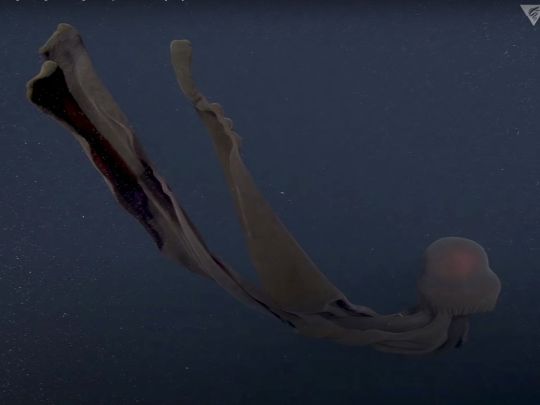
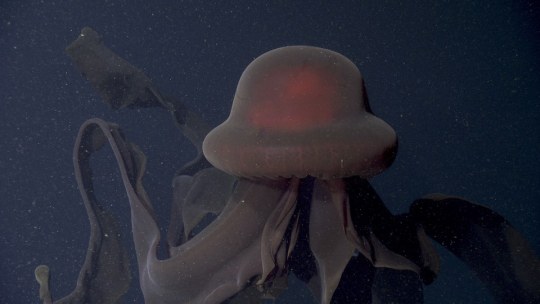
¹ Instead of stinging tentacles like usual jellyfish, the s. gigantea have arms to capture and trap prey. ( Plankton, small fish. )
² Monotypic in this context means that the species ( in this case, s. gigantea ) does not have any subspecies.
Let me know if I got anything wrong! Or add on anything if you'd like. If you hyperfixate on jellyfish, please tell me about your favorites!
ヾ(≧▽≦*)o
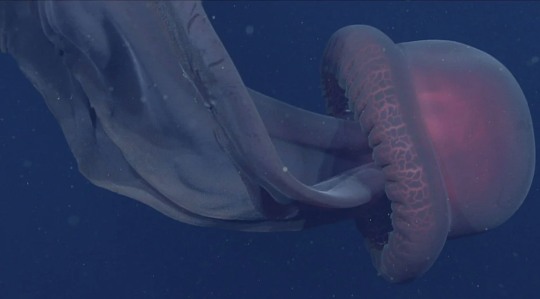
#jellyfish#phantom jellyfish#sygiomedusa gigantea#jellyfish facts#hyperfixation#info dump#biology#zoology
159 notes
·
View notes
Text
Ended up doing a taxonomy thing but I'm not sure if I'll ever properly use it for a post... anyways here's Class scyphozoa for you:

* Subject to change depending on individual species
Order Coronatae: ("Crown")
Tentacles, Lappets, Rhopalia, Mouth, Coronal Groove, Bell
Tentacles typically help up like a spiders'
Usually has 8 ball-like gonads under the bell
Suborder Discomedusae:
Order Semaeostomeae: ("Flag Mouth")
Bell, Oral Arms, Rhopalia, Tentacles
Frilly/ribbon-like oral arms
Order Rhizostomeae: ("Root Mouth")
Bell, Oral Arms, Rhopalia, Filaments
Broccoli-like oral arms
Filaments + Zooxanthallae optional
#.professor jellyfish speaks#jellyfish#art#scyphozoa#i tried to choose jellyfish that best represented each group#periphylla periphylla#chrysaora sp.#mastigias papua#hopefully everyjelly here can differentiate between the main three groups of Scyphozoa now ^-^!!
16 notes
·
View notes
Text
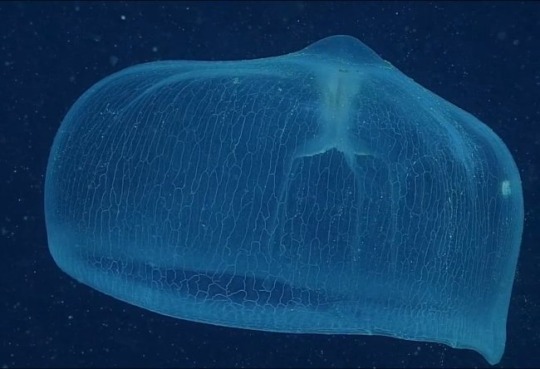
Deepstaria
#deepstaria#sea life#marine life#sea animals#jellyfish#jellies#cnidarians#cnidaria#wikipedia#wikipedia pictures#marine biology#animals#ocean#ocean life#scyphozoa#semaeostomeae#ulmaridae#kingdom animalia#animal kingdom#ocean animals
120 notes
·
View notes
Photo

Cambrian Explosion Month #06: Phylum Cnidaria – Medusozoa
The medusozoans are a group of cnidarians that includes modern true jellyfish, box jellyfish, stalked jellyfish, hydrozoans, and the weird fish egg parasite Polypodium.
Due to their soft gelatinous bodies their fossil record is very sparse. While vague fossilized blobs tend get interpreted as jellyfish fairly often, many of them turn out to be trace fossils or inorganic structures, and definite preserved medusae are only found in a few sites of exceptional preservation.
Among those rare examples of fossil jellies there are some amazingly well-preserved specimens known from the mid-Cambrian, discovered in the Marjum Formation in Utah, USA (~505 million years ago).
None of these species have been given their own names, and they're all tiny, only around 1cm in diameter (0.4"). But their anatomy is still preserved in enough detail to tentatively classify them into known lineages, including the box jelly, narcomedusan, and semaeostomean shown here.
Much larger Cambrian jellyfish have been also found in Death Valley, California, and in Wisconscin, representing preserved mass stranding events on ancient shorelines. Some of these jellies were up to about 50cm in diameter (20"), indicating that large soft-bodied animals were much more common in Cambrian seas than previously thought.
———
Nix Illustration | Tumblr | Pillowfort | Twitter | Patreon
#science illustration#paleontology#paleoart#palaeoblr#cambrian explosion 2021#cnidaria#medusozoa#jellyfish#cubozoa#box jellyfish#hydrozoa#narcomedusae#scyphozoa#semaeostomeae#eumetazoa#animalia#art
166 notes
·
View notes
Text
Uncharismatic Fact of the Day
Ghost, phantom, or spirit? The giant phantom jelly is none of those things! Stygiomedusa gigantea is most commonly found at depths of 6,665 m (21,867 ft), making it a rare and haunting sight; so rare, in fact, that it's only been spotted 114 times in the last 110 years. Not much is known about this species, save that it's one of the largest invertebrate predators of the deep, reaching up to 1 m (3.3 ft) across and 10 m (33 ft) in length!
Check out the video below to get a full view of this ghostly apparition:
youtube
#giant phantom jellyfish#Semaeostomeae#Ulmaridae#jellyfish#true jellyfish#cnidarians#invertebrates#uncharismatic facts#Youtube
81 notes
·
View notes
Text

A lion's mane jellyfish (Cyanea capillata) feeding on moon jellyfish in the white sea
by Alexander Semenov
#lions mane jellyfish#jellyfish#cnidarians#cyanea capillata#cyanea#Cyaneidae#semaeostomeae#Scyphozoa#cnidaria#wildlife: misc
196 notes
·
View notes
Text

...from so simple a beginning endless forms most beautiful and most wonderful have been, and are being, evolved.
- Charles Darwin
#psittaciformes#diptera#diatoms#the origin of species#carnivora#turing patterns#asparagales#malpighiales#accipitriformes#squamata#octopoda#decapoda#semaeostomeae#evolution#biology#evolutionary biology#moodboard#quotes#aesthetic#botany#zoology
1 note
·
View note
Photo

Medusa (Desmonema glaciale)
Photo by Norbert Wu
#medusa#jellyfish#desmonema glaciale#desmonema#cyaneidae#semaeostomeae#discomedusae#scyphozoa#medusozoa#cnidaria
71 notes
·
View notes
Text


Range: North, Black, Baltic, & Caspian Seas, Northeast Atlantic, & Northwest Pacific
41 notes
·
View notes